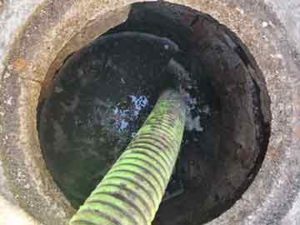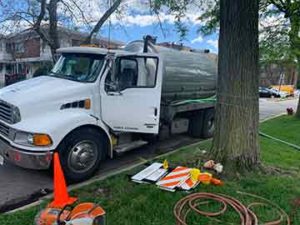Catch basins are receptacles buried underground to serve as a temporary reservoir, treat, and divert water into the sewer system. It is an essential part of the landscape drainage system and has a grate above, a drainage pipe sloping from the basin, and a sump pump at the bottom. When rainwater and solids flow over the catch basin, the grate traps debris and water drains through it into the pipes, but sediments settle in the sump pump. From the drainage pipe, water enters the sewage stream or plant.

For homes, catch basins are about one-foot by one-foot boxes in design. As RentSmartUSA explains, they help to collect, reserve, and filter water from your gutters, lawn, and around your home. Public catch basins are of larger designs made of concrete block, concrete, or polypropylene. The polypropylene types have perforations at the bottom and sides.
The benefits of catch basins
Catch basins are essential in the following ways:
- If you are residing in a location that experiences heavy rainfall, but the soil has poor drainage capacity, catch basins will help to maintain your landscape.
- They serve as temporary storage for rainwater and prevent the ground from becoming wet. As a result, they will improve your property’s drainage.
- During the water reserving stage, catch basins pre-treat water before discharging it into the sewer system. They prevent blockage in the sewer system by trapping large debris and sediments.
- Since catch basins collect runoff as soon as it surges, they prevent water from flooding your landscape, packing lots, driveway, or walkway.
Common problems with catch basins
Catch basins are essential. However, you can experience some issues if you don’t maintain or clean them regularly. The common problems you may encounter from poor maintenance of catch basins include the following:
- Clogging
After filtering debris and sediments over time, catch basins can get clogged. When this happens, the surrounding area will experience flooding.
- Pests
Catch basins may attract pests or serve as a breeding ground for insects, mosquitoes, and rodents.
- Sinkholes
An eroded support base or collapsed inlet and outlet pipes can create sinkholes in the area.
The importance of catch basin cleaning and how to do it
Continuous collection of debris and sediments can overwhelm the system over time. If left unattended, it may result in expensive damage to the system. That will lead to flooding of the environment and pollution of the community drinking water. However, regular and frequent cleaning of the catch basin will prevent all these from happening.
To clean the catch basin, you will need the following tools a long metal rod, shovel, long-handled broom with stiff bristles, thick rubber gloves, pitchfork, catch basin lid puller, safety cones, and reflective safety best.
When cleaning the catch basin, start from top to bottom:
- Remove or sweep debris from the grate.
- Use a crowbar or catch basin lid puller to open the grate. While doing this, ensure that the grate does not fall into the hole. Gently tap the edges with a mallet if the lid gets stuck.
- Remove all debris and organic material from the catch basin using your gloved hands, pitchfork, or rake.
- Insert a metal rod into the sediment until it gets to the bottom.
- If you notice that the sump pump is 60% full or the sediment is about six inches below the lowest pipe, then know that the sediments require removal.
Removing sediments from the catch basin is the most difficult part of the job. If the catch basin is shallow, you can use a shovel. However, we recommend that you hire the services of experts to help you remove the sediments.
Why you should let professionals clean your catch basin
It is better to hire the services of professionals to clean your catch basin because:
- They have specialized tools and equipment to ease the cleaning.
- Experts use vacuum pump trucks, mechanical catch basin cleaners, or vactor equipment. The choice of tools depends on what your location needs.
- They will inspect your catch basin for structural damages, ill-fitting lids, cracked walls, or falling mortar.
- When necessary, experts will perform additional maintenance such as repairing the cover, hood, frame, or brickwork.
- After removing the waste, the professionals will assist you with proper disposal of the debris and sediments instead of leaving them on the street to cause environmental or health hazards.
- The experts will also educate you on how often your catch basin requires cleaning based on the area, weather, and condition.
How often should you clean your catch basin?
The general recommendation for cleaning catch basins is once a year. However, you can do it more than once, depending on the quantity of debris in the catch basin.
The bottom line
If you have a catch basin on your property, it is your responsibility to maintain and keep it clean. Doing so will prevent you from experiencing water flooding or environmental pollution. To avert expensive damages and financial liabilities, hire professionals for regular catch basin cleaning.

